 |
||
|
||
| ||
Quality of digital cameras has already reached the level when one can easily replace a film compact auto camera with a memory-card one. Moreover, digital compact cameras from famous manufacturers can't be considered simply cheap auto cameras. They are entry-level reflex cameras with unremovable optical systems or very good compact cameras with very good optics. 1.5-2 Mp models allow for a decent 10*15 shot while 3 Mp devices have good reserves to make up for errors in exposure of white balance. In comparison with 1.5-2 Mp cameras, they have a more powerful zoom allowing to frame a shot's central part. However, the price is still higher than $150-200 (a price of a good compact zoomed camera), but the efforts of noname companies will soon bring it to this level. What are the minimal requirements for a consumer camera? 2-3x zoom-lens, well working automatic exposure and focusing, auto (and manual) white balance which is advantage of digital gadgets, built-in auto flash, auto release. These features are usually supplemented with such functions as video shooting and sound recording, displaying photo and video on TV, DPOF printing setting right in shots, several program modes, exposure correction, 50 - 400 ISO, software for PC data transfer, editing, creation of a digital album and printing. Certainly, companies also care about the design and other minor stuff like Li batteries, straps and eyelets, bags, audio welcoming messages and others. We have compared three cameras in the equal conditions: Pentax Optio 330 RS, Canon Digital IXUS v3, Nikon Coolpix 3500. Each of them has a junior sibling (2Mp, with almost the same capabilities sufficient for 10*15 cm, at a lower price) and a more feature-laden model. 
  As you can see, the companies stick to the pocket-size and cigarette-pack-size
design. Only Nikon looks inferior but its swiveling lens is the latest
thing in fashion. Although many would prefer the classic style of Pentax
and Canon, you should take a closer look at Nikon because its lenses are
hidden and the mechanical parts can't be damaged by careless touching.
Pentax Optio 330RSFollowing the trends of the digital technologies Pentax announced two new models in summer 2002: Optio 330RS and Optio 430RS. These digital 2G cameras of the popular Optio series incorporate all best features of their predecessors. The exterior of the new-comers doesn't differ markedly from the previous generations, they have a compact body made of high-quality stainless steel. The changes are brought only into the insides and functions. (after http://www.pentax.ru/) 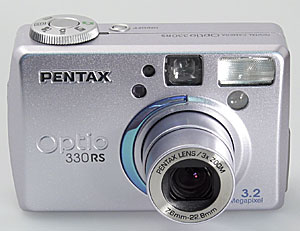 Compact metallic body, conventional design. 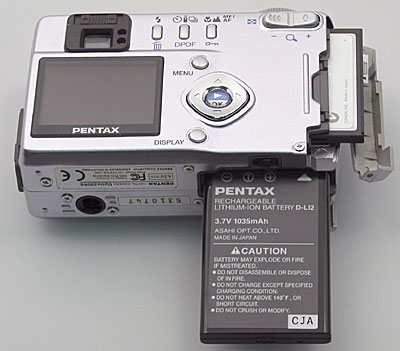 Optical viewfinder with dioptre correction, tripod mount, conventional control. Zoom/Enlargement lever in shooting/Viewing modes, buttons for flash modes, film transport (traditional for Pentax shooting at intervals and time-lapse video shooting), focusing mode buttons (manual, infinity), menu multiselector, menu button and display modes button. Integrated color filters supported: black-and-white (monochrome), sepia, red, rose, yellow, green blue, purple.  USB interface and power supply. IR port for remote control. Canon Digital IXUS v3Following the best traditions of IXUS, Digital IXUS v3 has a shining streamline body made of stainless steel and incorporates Canon's latest technologies. 3.2Mp CCD matrix has a higher resolution than previous Digital IXUS v3, and the image is adapted for A4 printing. Digital IXUS v3 is equipped with the latest super efficient DIGIC processor (DIGital Imaging Core). This innovation combines 6 main elements: CCD matrix control, auto exposure / auto focusing / auto white balance, signal processing, JPEG compression, memory card control and LCD displaying. iSAPS (Intelligent Scene Analysis based on Photographic Space) - this is one more technology used in Digital IXUS v3 which allows for top-quality shots. Canon analyses shots and data on shooting conditions and compares them to the data stored in the Photographic Space Data Library http://www.canon.ru/  Small and stylish camera with a moderate zoom and a myriad of functions typical of more professional solutions. 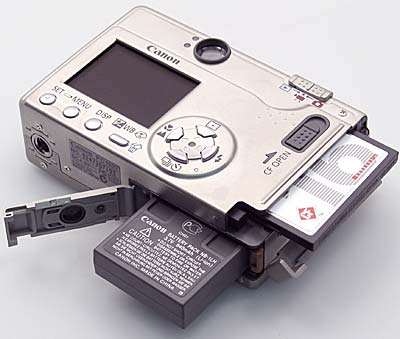 There is a lack of buttons for shooting settings though they are needed only for special purposes and advanced photography. The menu multiselector also controls an exposure type, focusing, flash and series modes. In addition: operating mode switch (view, video, photo), settings buttons, menu button, display modes and settings (file size and compression etc.), white balance/ exposure correction/ color modes for manual shooting. In the long exposure mode you can choose it from 1 to 15 sec. 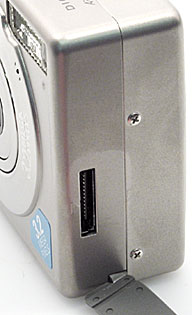 USB/TV connector (shared). Nikon Coolpix 3500The photo camera is meant for those who values style, wants an unsophisticated handy compact digital photo camera ensuring high quality of shots and who desires to get maximum pleasure from making digital photos. (after http://www.nikon.ru/) 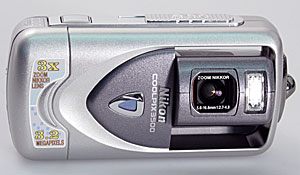 Swiveling lens, small flash and streamline body. Sliding Power/ Record/ Playback switch and release button on top. 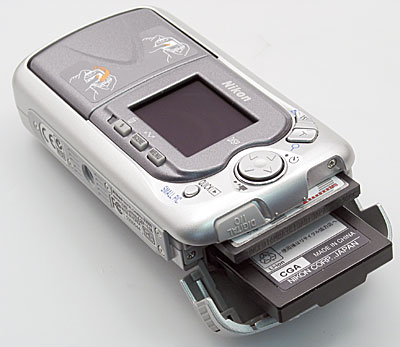 Display with buttons for flash control, programs and data transfer to PC, quick view and thumbnail creation for e-mailing (QUICK), menu multiselector, timer and photo-video-auto-manual settings. Focal length control button on top. Only white balance and exposure correction can be changed manually, BSS mode - best shot selector (from a given series). Memory card and battery are in the same compartment. Tripod mount. 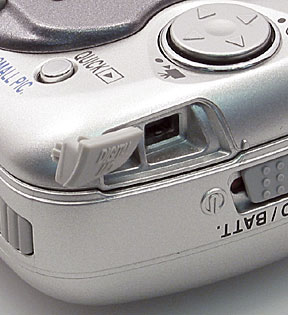 Only USB, no video-out. Compare the shotsWe took shots in the conditions as close as possible. We tested performance
of the automatic system and settings which are most frequently used by
users. They are auto shooting outside with the zoom in the extreme positions,
auto white balance in artificial illumination and flash operation, macro
shooting.
Fragments 1:1 for zoom teleposition (right shots).
The exposure auto system is very similar in all cases. Canon has inferior maximum zoom - 2X, against 3X of Nikon and Pentax. None of the cameras supports depth-of-field control. I noticed no apparent digital and JPEG artifacts when examined the shots 1:1. Flash and white balance
Macro
It's not easy to choose among the three cameras. Nikon processes the automatic
modes best of all, but it has the poorest bundle of functions. But if you don't
need sound recording, TV connection, long exposures and you are not going to use
Macro mode very often, then go with Nikon. Pentax is preferable for those who
want to shoot stereo and series of shots with a timer. Canon suits a photographer's
image most of all thanks to a wide range of functions, video and sound support
and the longest fast series provided by the new processor.
Sergei Sherbakov (sherbakovs@ixbt.com)
Write a comment below. No registration needed!
|
Platform · Video · Multimedia · Mobile · Other || About us & Privacy policy · Twitter · Facebook Copyright © Byrds Research & Publishing, Ltd., 1997–2011. All rights reserved. | |||||||||||||||||||||||||||||||||||||||||||||||||||||||||||||||||||||||||||||||||||||||||||||||||||||||||||||||||||||||||||||||||||||||||||||||||||||||||||||||||||||||||||||||||||||||||||||||